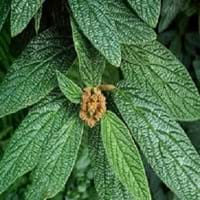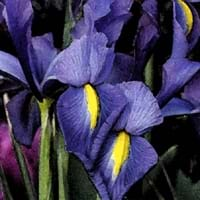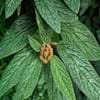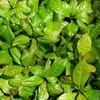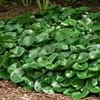Life Span
Perennial
Perennial
Type
Broadleaf Evergreen
Herbaceous Perennial
Origin
China
Hybrid origin
Types
not available
Not Available
Habitat
Cold Regions
meadows, Riverbanks, Rocky Mountains
USDA Hardiness Zone
5-8
5-9
AHS Heat Zone
Not Available
9-5
Sunset Zone
21,22
2b, 3a, 3b, 4, 5, 6, 7, 8, 9, 10, 11, 12, 13, 14, 15, 16, 17, 18, 19, 20, 21, 22, 23, 24
Habit
Narrow Upright/Fastigiate
Clump-Forming
Flower Color
White, Yellow
White, Yellow, Blue, Purple, Orange, Pink, Rose, Coral, Peach, Burgundy, Lavender, Plum, Orange Red, Dark Salmon, Bronze, Chocolate, Black
Flower Color Modifier
Bicolor
Bicolor
Fruit Color
Red, Black
Not Available
Leaf Color in Spring
Dark Green
Green, Light Green, Gray Green
Leaf Color in Summer
Dark Green
Yellow green
Leaf Color in Fall
Dark Green
Not Available
Leaf Color in Winter
Gray Green, Dark Green
Light Green
Leaf Shape
Lanceolate to elliptical
Sword-like
Plant Season
Spring, Summer, Fall
Spring
Sunlight
Partial Sun, Partial shade, Full Shade
Full Sun, Partial Sun
Growth Rate
Medium
Medium
Type of Soil
Clay, Loam, Sand
Clay, Loam, Sand
The pH of Soil
Acidic, Neutral, Alkaline
Acidic, Neutral, Alkaline
Soil Drainage
Average
Well drained
Bloom Time
Late Spring
Early Spring, Spring, Late Spring
Tolerances
Light Frost
Drought
Where to Plant?
Ground
Ground
How to Plant?
Transplanting
Root Plants
Plant Maintenance
Medium
Medium
Watering Requirements
Keep ground moist, Keep the Soil well drained
Average Water Needs
In Summer
Lots of watering
Lots of watering
In Spring
Moderate
Moderate
In Winter
Average Water
Average Water
Soil pH
Acidic, Neutral, Alkaline
Acidic, Neutral, Alkaline
Soil Type
Clay, Loam, Sand
Clay, Loam, Sand
Soil Drainage Capacity
Average
Well drained
Sun Exposure
Partial Sun, Partial shade, Full Shade
Full Sun, Partial Sun
Pruning
Remove damaged leaves, Remove dead branches, Remove dead leaves
Remove damaged leaves, Remove dead branches, Remove dead leaves
Fertilizers
All-Purpose Liquid Fertilizer
All-Purpose Liquid Fertilizer
Pests and Diseases
Aphids, Beetles
Bacteria, fungus, Viruses
Plant Tolerance
Light Frost
Drought
Flower Petal Number
Single
Single
Foliage Texture
Coarse
Fine
Foliage Sheen
Glossy
Matte
Attracts
Birds, pollinators
Butterflies, Hummingbirds
Allergy
Toxic
Not Available
Aesthetic Uses
Farmland, Wild gardens
Beautification, Showy Purposes
Beauty Benefits
Not Available
Not Available
Environmental Uses
Air purification
Air purification
Medicinal Uses
No Medicinal Use
Not Available
Part of Plant Used
Not Available
Flowers, Root
Other Uses
Acts as a natural source of rain water for birds and insects., Beneficial species for attracting pollinators
Basketary, Used for fragrance
Used As Indoor Plant
No
No
Used As Outdoor Plant
Yes
Yes
Garden Design
Feature Plant, Foundation, Mixed Border, Screening, Wind Break
Cutflower, Foundation, Mixed Border, Rock Garden, Wall
Botanical Name
VIBURNUM rhytidophyllum
IRIS 'Apollo'
Common Name
leatherleaf plant
Carmen Iris, Dutch Iris
In Hindi
Leatherleaf Viburnum
Dutch Iris
In German
Runzelblättriger Schneeball
Dutch Iris
In French
Viburnum rhytidophyllum
Dutch Iris
In Spanish
Viburnum rhytidophyllum
Dutch Iris
In Greek
Viburnum rhytidophyllum
Dutch Iris
In Portuguese
Kalina sztywnolistna
Dutch Iris
In Polish
Kalina sztywnolistna
Dutch Iris
In Latin
leatherleaf viburnum
Dutch Iris
Phylum
Magnoliophyta
Magnoliophyta
Class
Magnoliopsida
Magnoliopsida
Order
Dipsacales
Asparagales
Family
Caprifoliaceae
Iridaceae
Clade
Angiosperms, Asterids, Eudicots
Angiosperms, Monocots
Tribe
Not Available
Irideae
Subfamily
Not Available
Iridoideae
Number of Species
Not Available
Importance of Leatherleaf Viburnum and Dutch Iris
Want to have the most appropriate plant for your garden? You might want to know the importance of Leatherleaf Viburnum and Dutch Iris. Basically, these two plants vary in many aspects. Compare Leatherleaf Viburnum and Dutch Iris as they differ in many characteristics such as their life, care, benefits, facts, etc. Every gardener must at least have the slightest clue about the plants he wants to plant in his garden. Compare their benefits, which differ in many ways like facts and uses. The medicinal use of Leatherleaf Viburnum is No Medicinal Use whereas of Dutch Iris is Not Available. Leatherleaf Viburnum has beauty benefits as follows: Not Available while Dutch Iris has beauty benefits as follows: Not Available.
Compare Facts of Leatherleaf Viburnum vs Dutch Iris
How to choose the best garden plant for your garden depending upon its facts? Here garden plant comparison will help you to solve this query. Compare the facts of Leatherleaf Viburnum vs Dutch Iris and know which one to choose. As garden plants have benefits and other uses, allergy is also a major drawback of plants for some people. Allergic reactions of Leatherleaf Viburnum are Toxic whereas of Dutch Iris have Not Available respectively. Having a fruit bearing plant in your garden can be a plus point of your garden. Leatherleaf Viburnum has showy fruits and Dutch Iris has no showy fruits. Also Leatherleaf Viburnum is not flowering and Dutch Iris is flowering. You can compare Leatherleaf Viburnum and Dutch Iris facts and facts of other plants too.
